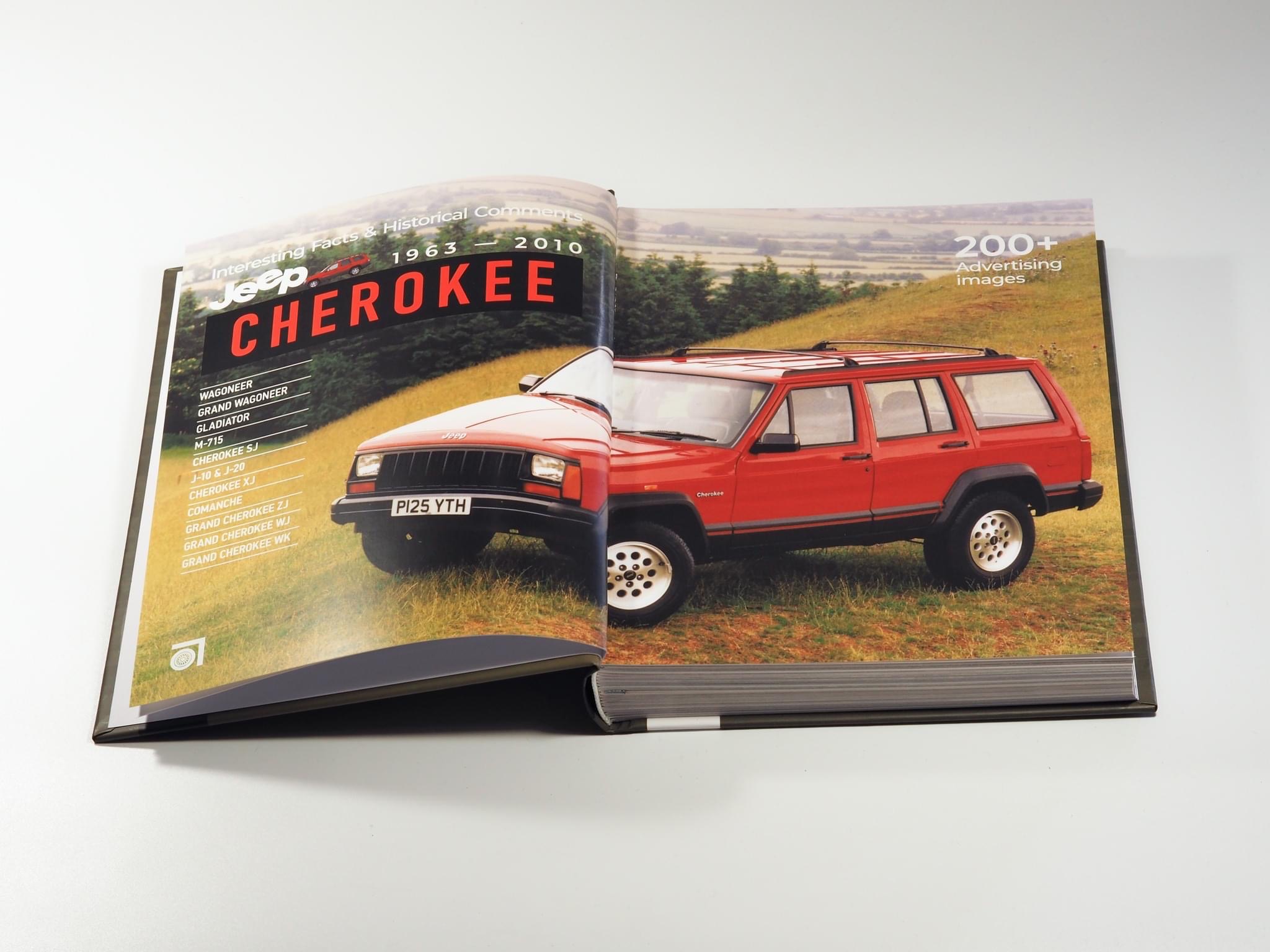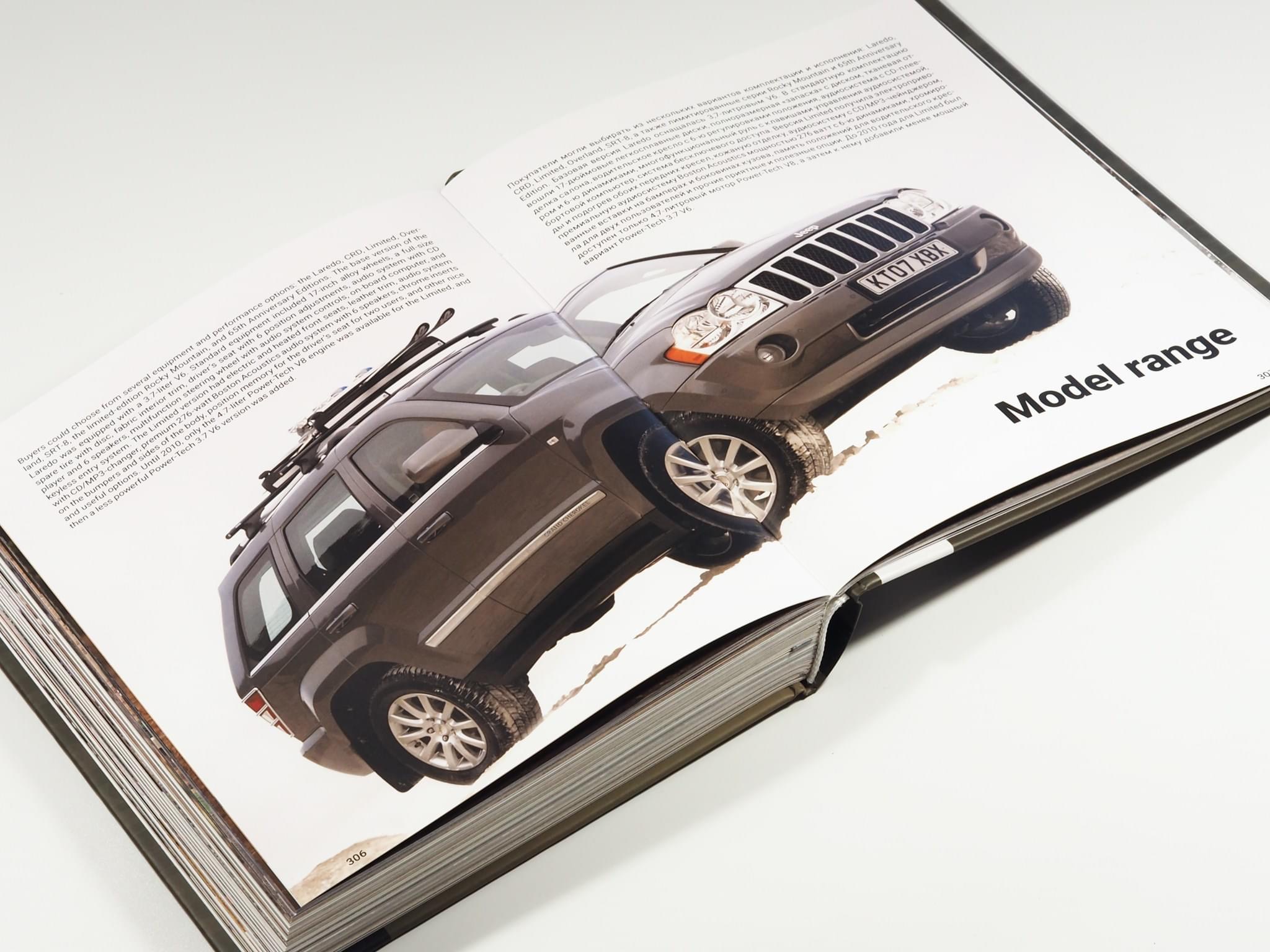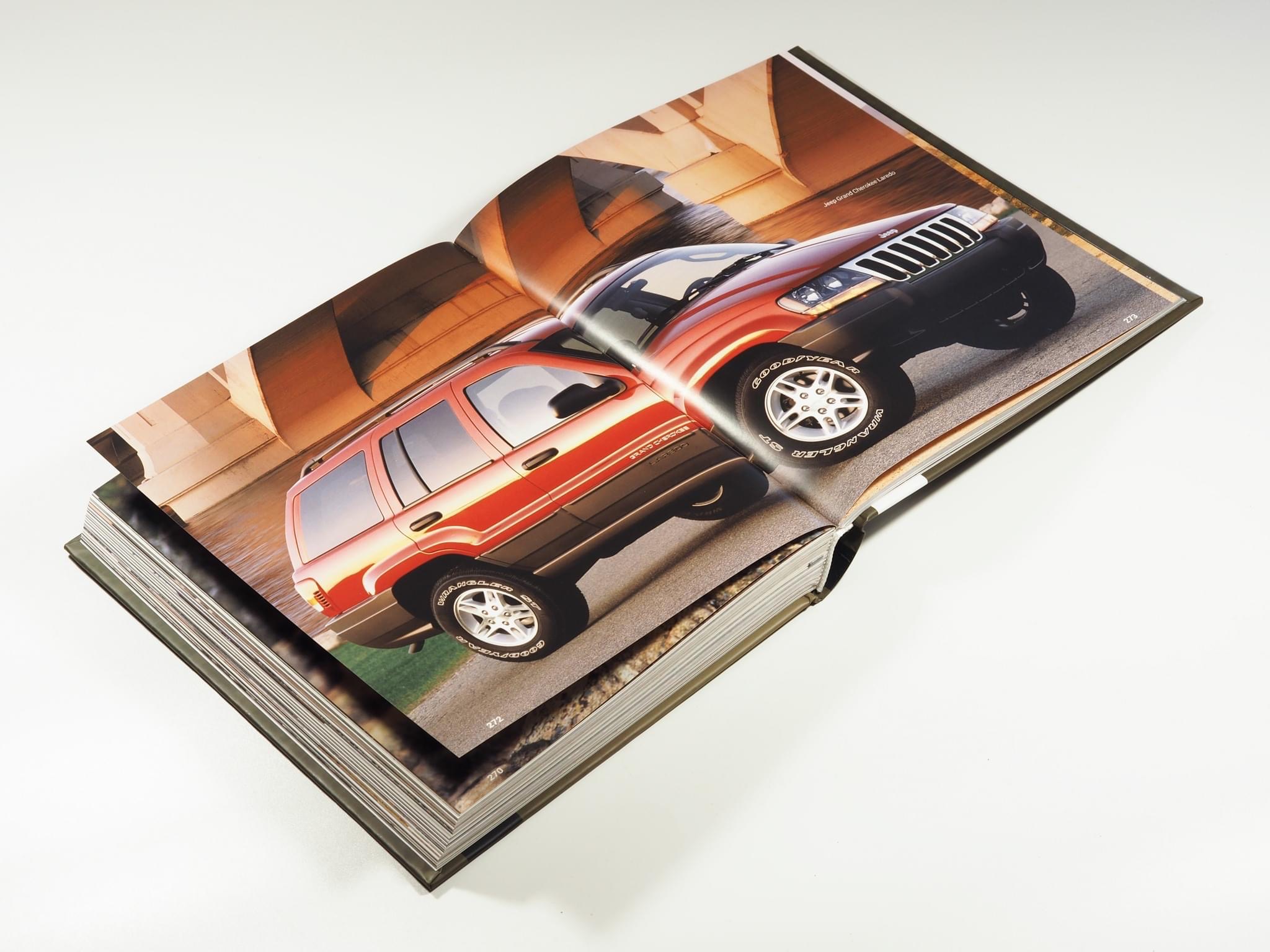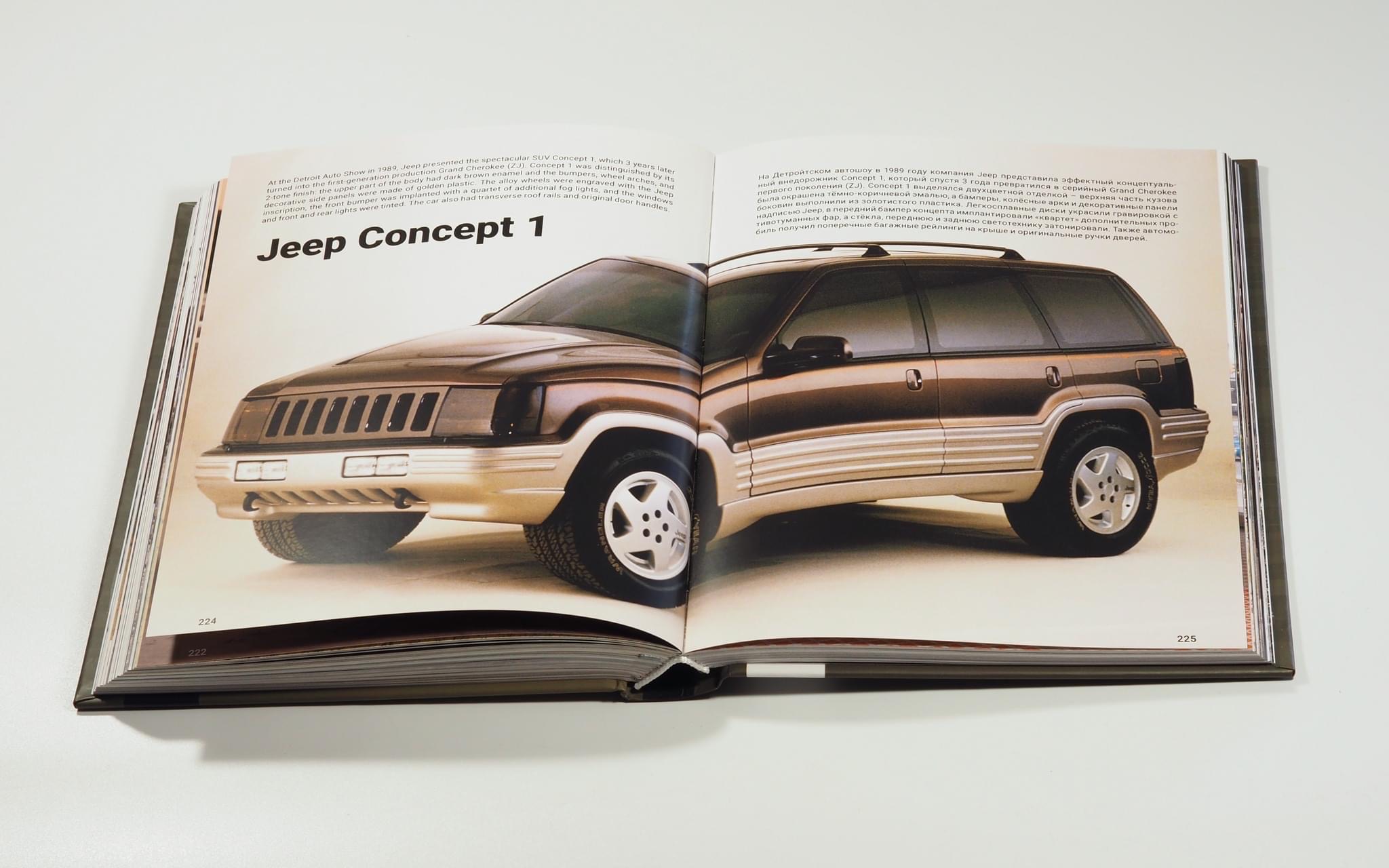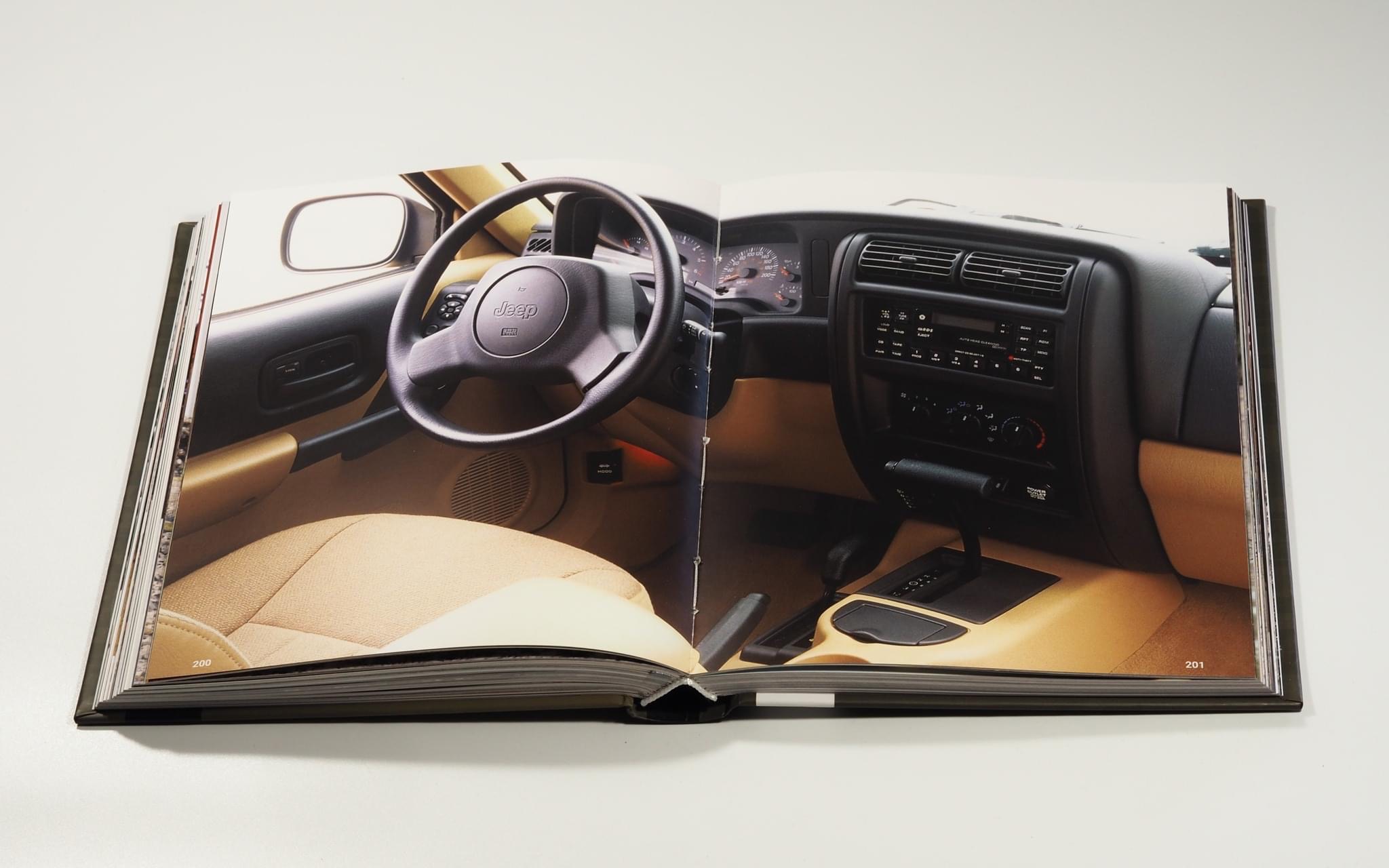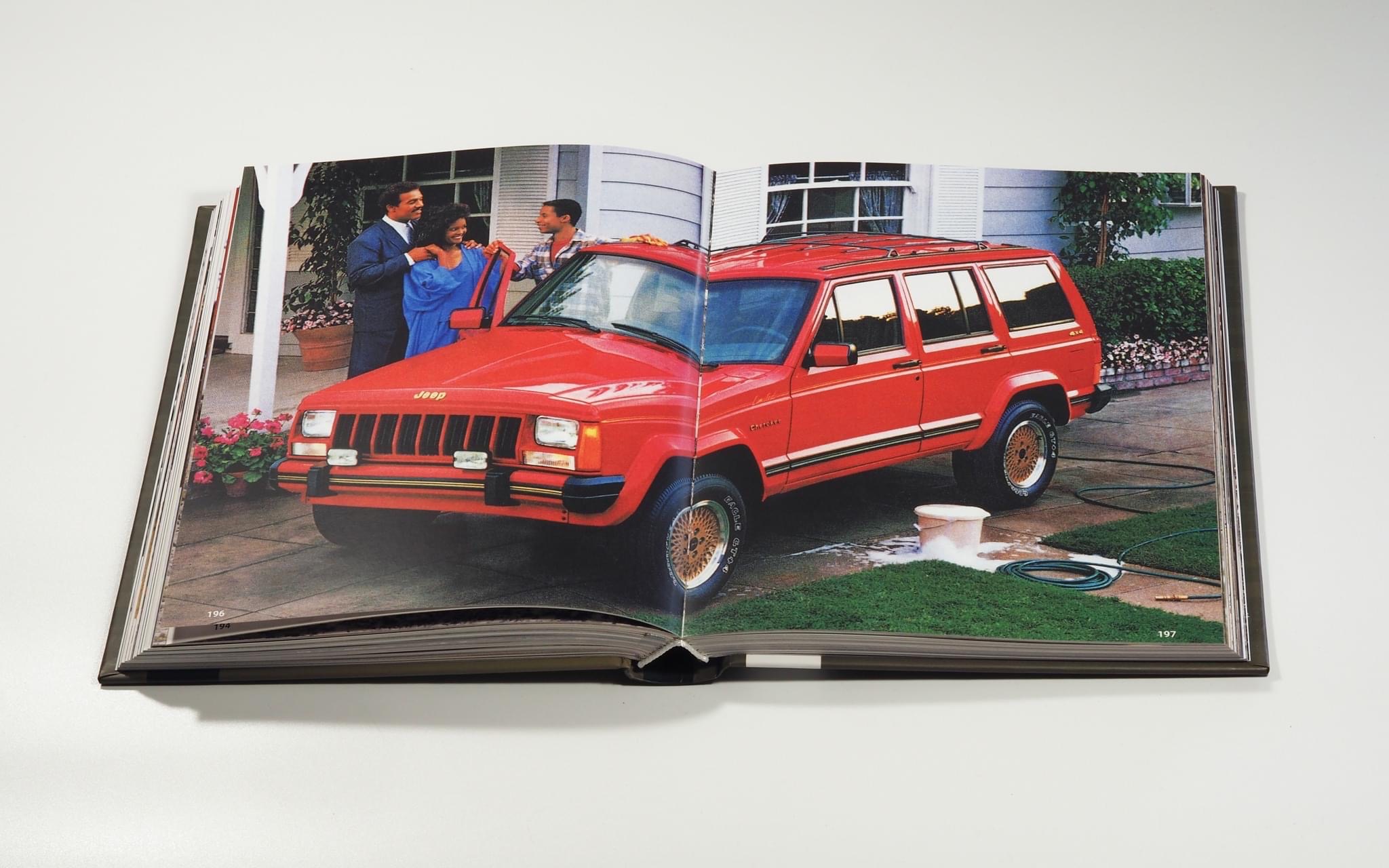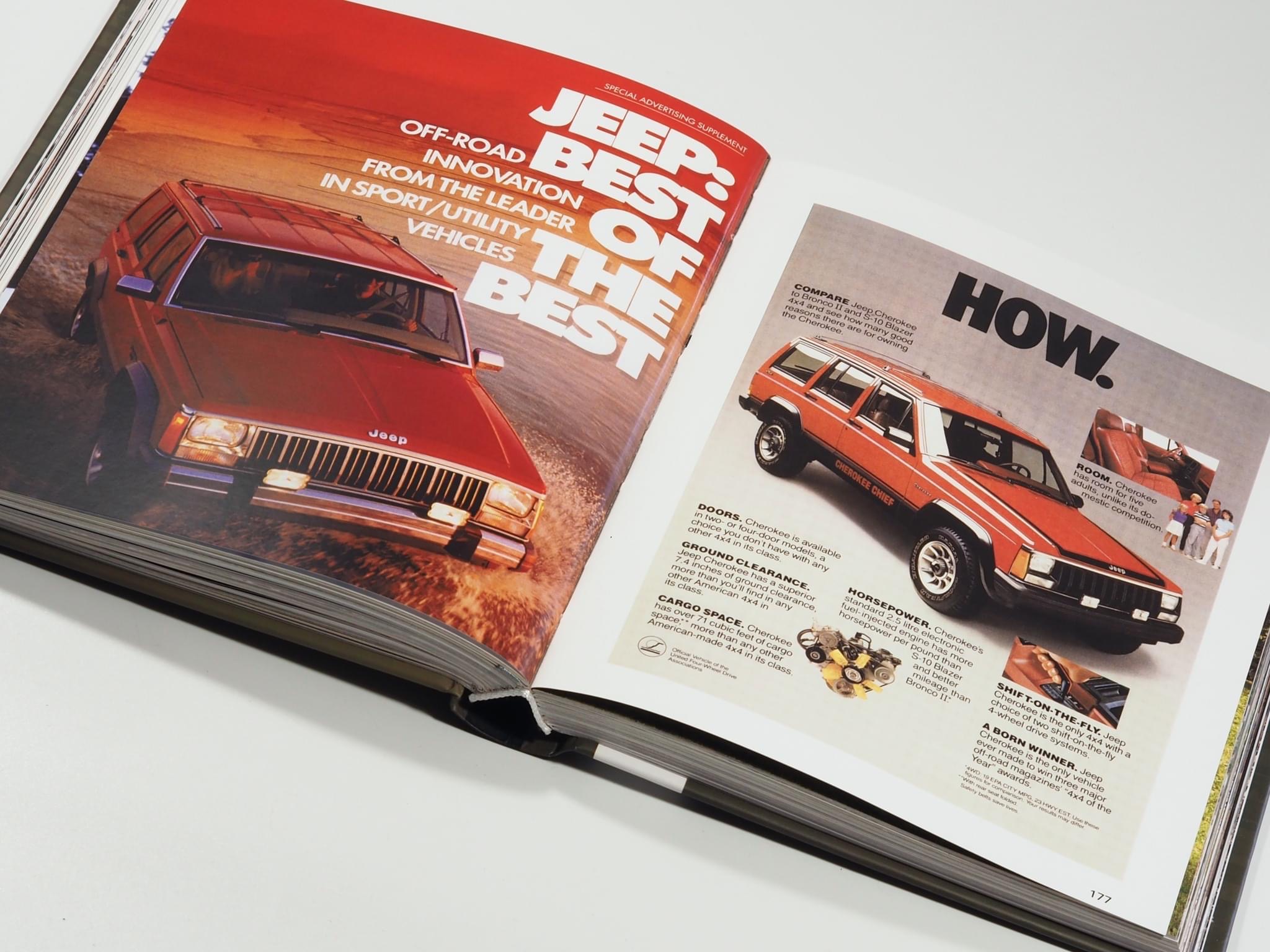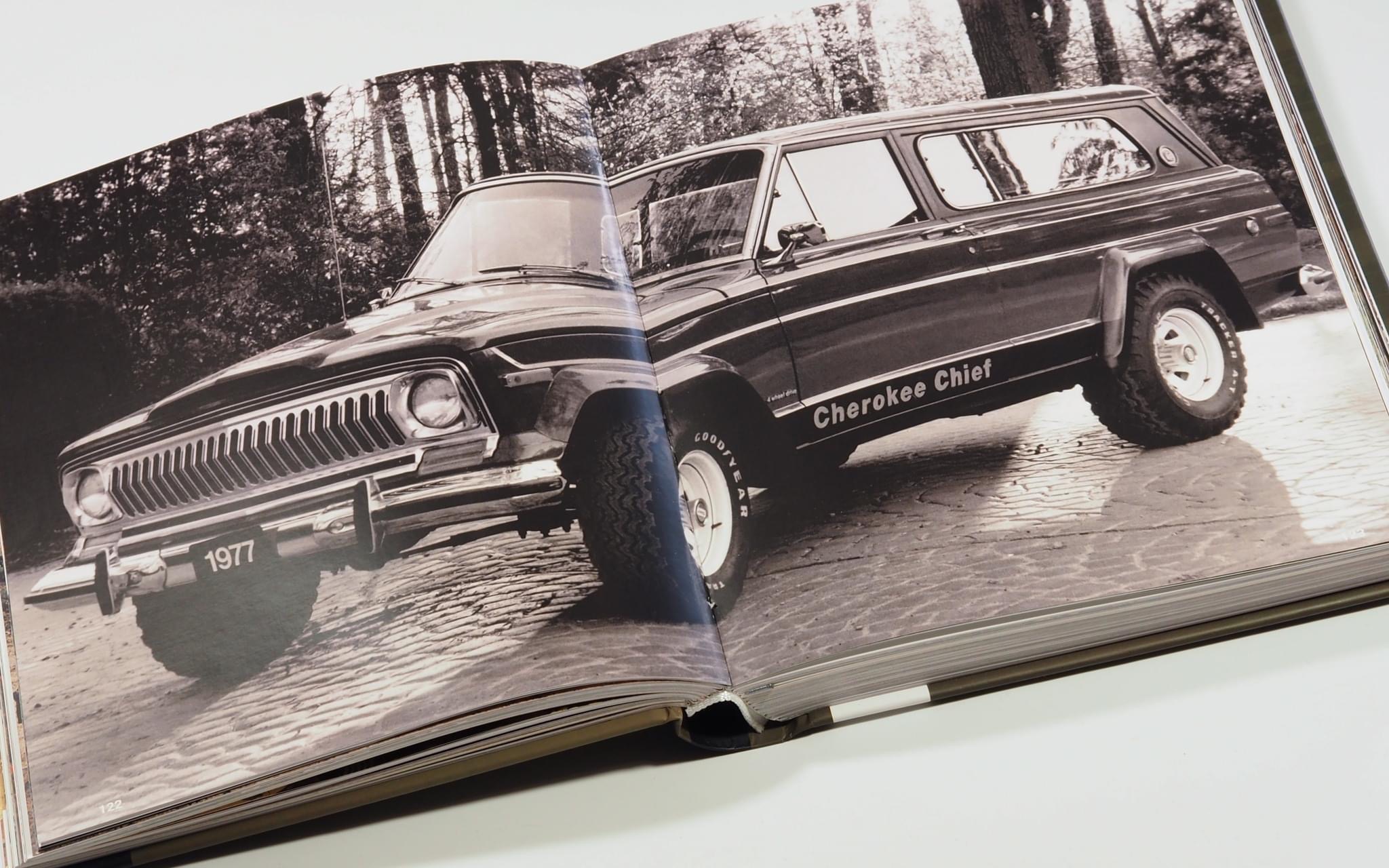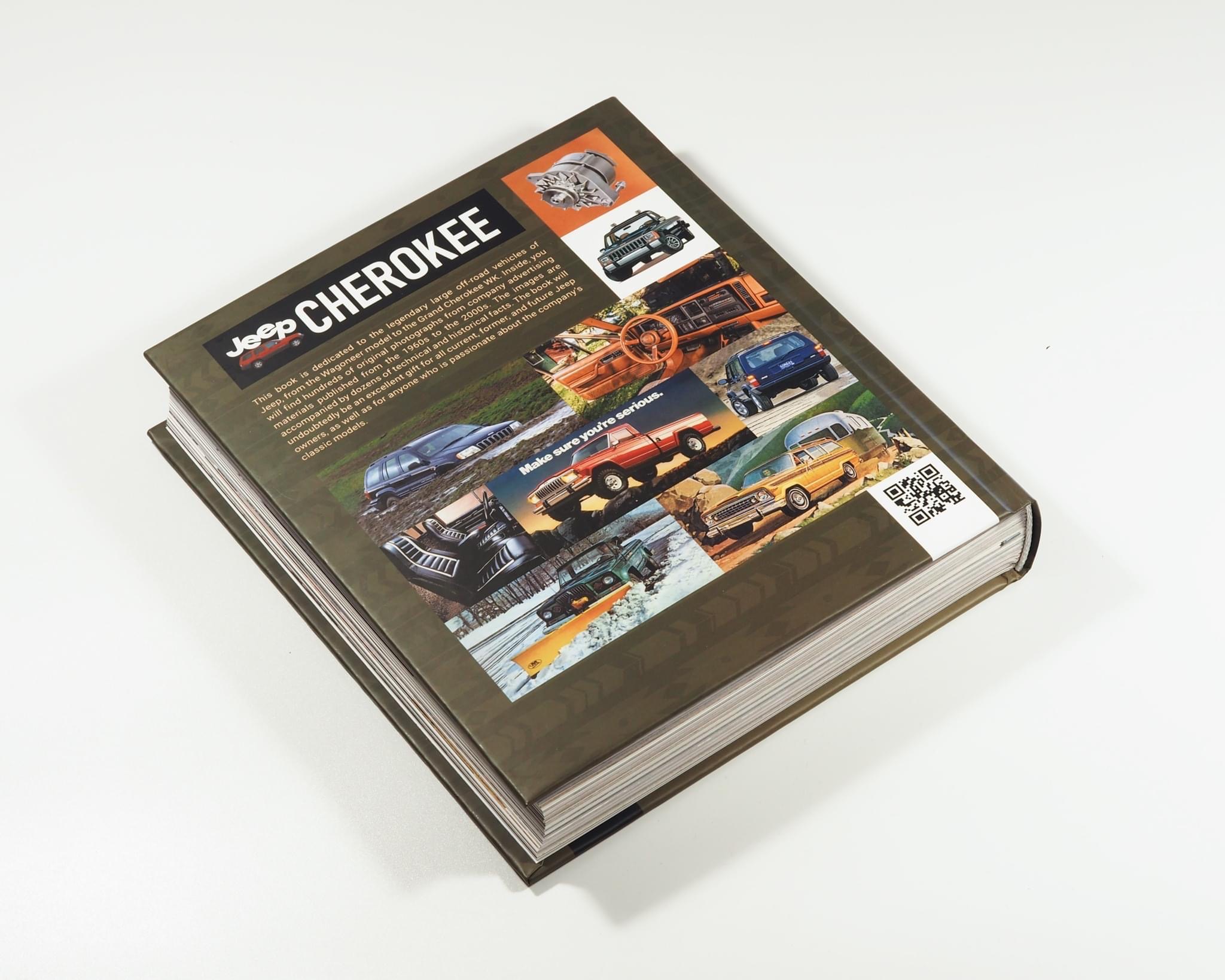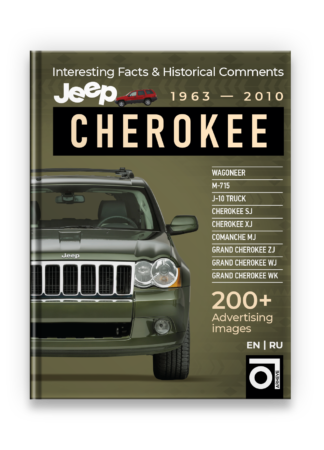Description
Jeep Cherokee Hardcover book (fragment of the text)
In 2021, the Jeep brand celebrated its 80th anniversary. Over the years, the legendary American brand has come a long way from unpretentious army off-road vehicles to luxury SUVs. Today, it has a large army of fans around the world, which is only growing year by year.
A simple utilitarian all-terrain vehicle that had endured all the hardships of war was not suitable for a measured post-war life. So, after successfully converting the army’s Willys MB into the civilian Jeep CJ-2/2A, the company began to expand its product lineup. In 1946, the world’s first all-metal all-wheel drive station wagon Willys Station Wagon appeared, which today can be safely called the progenitor of modern crossovers (by the way, there was also a budget rear-wheel drive version).
Based on the station wagon, they created a commercial version for delivering small batches of goods. And in 1947, sales started of the brand’s first pickup truck, the Jeep Truck. With the expansion of the model range, the number of customers who used Jeep vehicles not only for work but also for outdoor activities grew rapidly.
In June 1950, Willys-Overland officially trademarked Jeep and changed the name to Willys Motors. In 1953, it merged with the Kaiser-Frazer company. The newly formed automaker was named Kaiser Jeep, and the Willys name was no longer used in the model names. Merging the two companies made it possible to stand together in competition with the giants of the automotive industry.
The 1960s were marked by a shift from “aerostyle” to more rational and concise design, as well as an increase in demand for automobiles: from 1960 to 1965, U.S. car production increased from 7.9 million to 11.1 million vehicles. To meet the growing demands of customers, the Jeep lineup was expanded to 14 models. It also included the new Wagoneer and Gladiator large SUVs, created under the direction of talented designer Brooks Stevens.
The next decade was a period of new challenges for the company. In 1970, Henry Kaiser sold Kaiser Jeep to American Motors Corporation (AMC) for $75 million to avoid bankruptcy.
The 1979 energy crisis spurred the creation of a more compact all-wheel-drive model with a load-bearing body, the Jeep Cherokee. With the introduction of this new vehicle, AMC was able to achieve record sales. But, unfortunately, the commercial success of the new Cherokee could not save AMC from losing its independence.
In March 1987, it was absorbed by Chrysler, and the Jeep brand became part of the new Jeep/Eagle division. But the string of mergers and acquisitions didn’t end there, either. In 1998, an alliance was formed between the German concern Daimler-Benz and Chrysler Corporation, which ceased to exist in the summer of 2007. Having lost the support of its German partners, Chrysler was on the verge of bankruptcy. Fortunately, financial assistance from the U.S. government allowed the assets, including the Jeep division, to remain intact.
In 2009, the new management company Chrysler LLC was created, which eventually came under the control of the Italian concern FIAT. Jeep was part of FIAT Chrysler Automobiles (FCA) from 2014 to 2021, with FCA merging with PSA Group (also known as Peugeot S.A.) on January 16, 2021. The new transnational automobile concern was named Stellantis (from the Latin verb stelare, “to shine with stars”).
In November 1962, the company revolutionized the world of off-road vehicles by introducing the Wagoneer, which had a number of innovations for vehicles with all-wheel drive: automatic transmission, 6-cylinder engine with overhead valves, independent front suspension, and automatic all-wheel drive system. This increased comfort and improved the SUV’s dynamic characteristics, so the Wagoneer can be considered without exaggeration the founder of the luxury SUV category.
Read the continuation of Jeep Cherokee story in the book.
Other books about history of Jeep:

